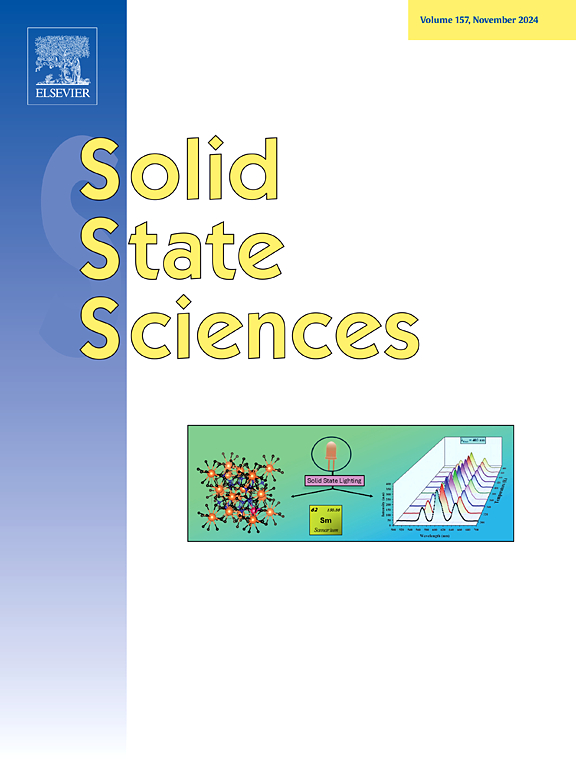Effect of self partial crystallization with heavy cation addition on radiation shielding properties
IF 3.4
3区 化学
Q2 CHEMISTRY, INORGANIC & NUCLEAR
引用次数: 0
Abstract
This study produced glass materials by adding La2O3 to Blast Furnace Slag in specific proportions. Partial crystallization was attempted to be achieved by a composition effect. A partial crystallization effect is provided by composition and Spinodal phase separation. X-ray diffraction analysis (XRD), Raman analysis, and differential thermal analysis (DTA) tests were performed on the produced samples. An optical microscope was used to observe phase separation. Mass attenuation coefficient (MAC), linear attenuation coefficient (LAC), mean free path (MFP), values of half-value layers (HVL), and tenth-value layers (TVL) measurements were made experimentally for radiation shielding properties. Experimental values were checked with theoretical calculations, and experimental/theoretical results were very close. LAC values were determined in the range of 0.1537–0.2607 cm−1 depending on energy and composition. While the values decreased with photon energy, they increased with La2O3 addition. HVL values were measured as 2.6588–4.5109 cm depending on the energy and composition, these values increased with energy and decreased with La2O3 addition. Phase separation controlled partial crystallization effect was achieved by specific La2O3 addition. It was observed that the La2O3 effect improved shielding properties, and partial crystallization provided positive effects, especially in LAC values.

重阳离子自部分结晶对辐射屏蔽性能的影响
本研究通过在高炉渣中按一定比例添加La2O3制备玻璃材料。试图通过组分效应实现部分结晶。组分和Spinodal相分离提供了部分结晶效应。对制备的样品进行了x射线衍射分析(XRD)、拉曼分析(Raman)和差热分析(DTA)测试。用光学显微镜观察相分离情况。实验测量了质量衰减系数(MAC)、线性衰减系数(LAC)、平均自由程(MFP)、半值层(HVL)和十值层(TVL)的辐射屏蔽性能。实验值与理论计算核对,实验与理论结果非常接近。根据能量和成分的不同,LAC值在0.1537-0.2607 cm−1范围内测定。该值随光子能量的增加而降低,随La2O3的加入而增加。HVL值随能量和组成的不同在2.6588 ~ 4.5109 cm之间,随能量的增加而增大,随La2O3的加入而减小。通过添加一定量的La2O3,实现了相分离控制的部分结晶效果。结果表明,La2O3效应改善了镀层的屏蔽性能,部分结晶对镀层的屏蔽性能有积极的影响,尤其是在LAC值方面。
本文章由计算机程序翻译,如有差异,请以英文原文为准。
求助全文
约1分钟内获得全文
求助全文
来源期刊

Solid State Sciences
化学-无机化学与核化学
CiteScore
6.60
自引率
2.90%
发文量
214
审稿时长
27 days
期刊介绍:
Solid State Sciences is the journal for researchers from the broad solid state chemistry and physics community. It publishes key articles on all aspects of solid state synthesis, structure-property relationships, theory and functionalities, in relation with experiments.
Key topics for stand-alone papers and special issues:
-Novel ways of synthesis, inorganic functional materials, including porous and glassy materials, hybrid organic-inorganic compounds and nanomaterials
-Physical properties, emphasizing but not limited to the electrical, magnetical and optical features
-Materials related to information technology and energy and environmental sciences.
The journal publishes feature articles from experts in the field upon invitation.
Solid State Sciences - your gateway to energy-related materials.
 求助内容:
求助内容: 应助结果提醒方式:
应助结果提醒方式:


